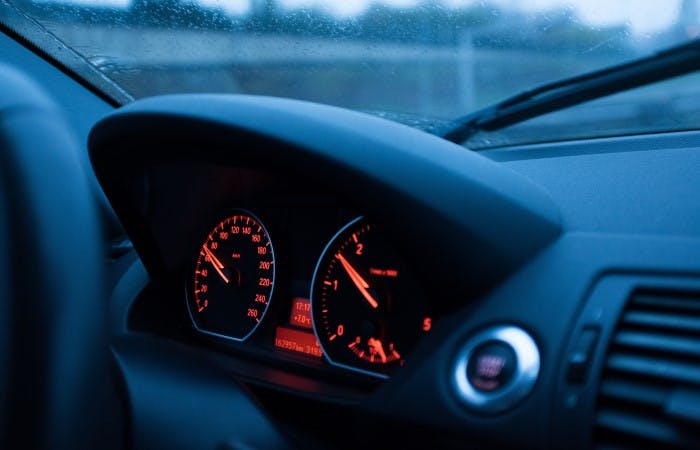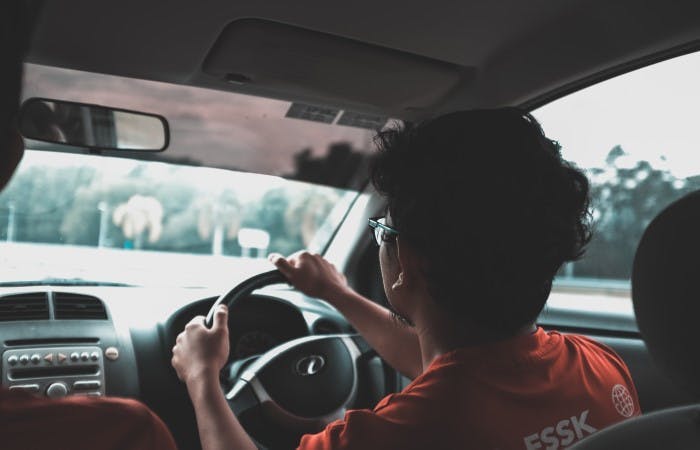
Clutch control is one of the toughest things for learners to master, and is even capable of causing trouble for experienced drivers. However, with most UK motorists still getting behind the wheel of a manual car, it remains a necessary skill. With this in mind, we’ve created our very own top tips to help you overcome your clutch control problems and enjoy smooth driving from now on.
1. Practice finding the bite
If you find that you’re frequently stalling the car, the best thing to do is to start from scratch. This means starting from the basics: finding the biting point. If you manage to get this under control, you can start rebuilding your clutch control once more. Start things off by finding a quiet stretch of flat road to practice on. Ideally, the area won’t have much foot or road traffic, which means you won’t be disturbed.
Once you’re ready to start, make sure the handbrake is applied, step down on the clutch and switch to first gear. Next, start to slowly release the clutch pedal. Play close attention to the car as you do this. You’ll be able to feel the car reach the biting point, as it will start to fight against the handbrake to inch forward. Practice doing this several times. The more you allow yourself to get used to the process of finding the biting point, the more you’ll solidify your muscle memory.
2. Start to add gas
By this point, you should be able to more or less find the biting point in your sleep. Now, it’s time to start introducing the accelerator pedal into the mix. As you start to bring the clutch pedal up, you should slowly start to press down on the accelerator pedal. Think of it as a see-saw, if you will. As you bring up the clutch and push down on the gas, there will be an equilibrium in which the car is completely still. Once you release the handbrake and increase the gas slightly—taking your foot off the clutch—you’ll begin to move forwards.
If you’re having some trouble with this step, you should try to concentrate on your speed. When you’re bringing the clutch up, you need to take your time. If you rush, you run the risk of stalling the car. Similarly, as you’re releasing the clutch, you need to make sure you’re not being too heavy-footed with the accelerator pedal. It’s a matter of balance here. Once you figure it out though, clutch control will be a walk in the park.
3. Switch your shoes
Still can’t make heads or tails of clutch control? If you keep fluctuating between “I really can’t figure out clutch control” and “I think I’ve got the hang of it now”, your problem might very well lie at your feet. That is, it could be your choice of footwear that’s making clutch control such a struggle. It might sound silly, but this is a point worth making.
Clutch control relies on your ability to feel the pedals properly and move without any restrictions. If you’re wearing inflexible shoes with a thick sole, for example, you’re not going to be able to get a good enough feel for the clutch and biting point. If you wear a pair of flat shoes with a thin sole, however, you’ll be far more aware of how much movement it takes to find the biting point, apply the gas and set off.
The next time you have a driving lesson or go on a practice run, try bringing a few pairs of shoes with you. As you progress, you should take a few breaks so that you can switch your shoes until you find a pair that seem to work. Just remember that flip flops are never suitable!
4. Stop rushing

When you first start out driving, your instructor will have you practicing on quiet roads that don’t have much traffic. This is great for beginners, as it gives them time to get to grips with the basics without interruption—finding the biting point with gas and setting off without a hitch. It’s when you start to factor in heavy traffic and junctions that it can start to get messy.
Imagine this scenario: you’re at the front of a queue of traffic waiting for the lights to turn green. Suddenly, it’s on green and you’ve got to move. Instead of taking your time, you try to head off in a microsecond. What happens next? You stall the car and try not to have a meltdown. You’d be hard-pressed to find a single learner driver that hasn’t been in this situation before.
It’s understandable. When you’re at the front of a line of traffic, it’s easy to feel the pressure and forget everything you’ve been taught. Instead of giving into panic, however, you should take your time. The drivers behind you will be able to spot your L plates and know why you’re taking a bit longer than the average driver.
5. Remember that all clutches are different
If your driving instructor has recently switched their car, or you’ve bought your first one, you might only just be starting to struggle with clutch control. Whilst it might seem like it’s come out of nowhere, there’s actually a simple explanation—all clutches are different. Your driving instructor’s car might have a high biting point, which means you have to move your foot up higher to find it.
Once you pass your test and purchase your own car, it could very well have a lower biting point that doesn’t require as much upward movement. As you’re so used to a high biting point, however, you might find yourself losing control and surging forward without meaning to. Whenever you switch cars, you’ll have to get used to a completely different biting point. So, if you have switched vehicles recently, we’d suggest going back to our first tip. Practice finding your new biting point until your muscle memory catches up.
6. Take a break

It’s all too easy to get in your own head about things sometimes. Once you stall the car once, twice and so on, it’s difficult to stop. It’s like your brain is telling you how to set off properly, but your lead feet keep on slamming down and coming up too fast anyway. If this happens while practicing, it might be worth taking a step back for a while. Sometimes, carrying on can be counter-productive.
Instead of learning from your mistakes, you can end up stuck in a rut because you’re so distressed or frustrated. Rather than beat yourself up over it, you should take a break from driving for the day. Try to occupy your time with something other than driving. By doing so, you can go into your next lesson completely refreshed. Odds are, the frequent stalling was just a fluke and byproduct of you psyching yourself out.
7. Listen to your instructor
No matter how angry or frustrated you get at your lack of progress with clutch control, you should always pay attention to your instructor’s feedback. You might not want to hear it, but they could be giving you the answer to your problems. If they tell you, for example, that you’re bringing the clutch up too quickly, then you know you need to slow it down.
Similarly, if you’re told that you’ve not used enough gas to move, then the solution is to use more of it next time. Your driving instructor knows what they’re talking about, which is why you should trust their judgement. Even if you feel like you’re a bad driver, or that you’re never going to “get it”, trust your instructor's judgement.
Already passed your test? If you’re no longer driving with an instructor, you might want to look into driving with a family member or friend who has a few years of driving experience under their belt. They might be able to give you a few pointers to help you master clutch control.
8. Control your fear

The more you build something up as impossible in your mind, the more difficult it will be to overcome. If you’re convinced you’re never going to get to grips with clutch control, it will likely take you twice as long to master it. It’s a classic case of self-sabotage. If you’re dreading getting in the car, or trying to avoid it, you’re not going to progress as well as you should.
Practice makes perfect, and avoiding the problem will not make it go away. So, if you’re still struggling, make your way through out tips again until something sticks. If clutch control is still as enigmatic to you as it was before you read this guide, you might want to consider making the move to an automatic car instead—where you'll probably find hill starts just that bit easier. It could very well be that manual transmission is simply not a good match for you.
Subscribe for driving advice, offers & more
We'd love to let you know about our courses, news and offers via email. You may unsubscribe at any time.
Star Genie Limited trading as PassMeFast. Company number 10093359
Copyright © 2024 owned by Star Genie Limited
PassMeFast, Blue Tower, MediaCityUK, Salford, M50 2ST
